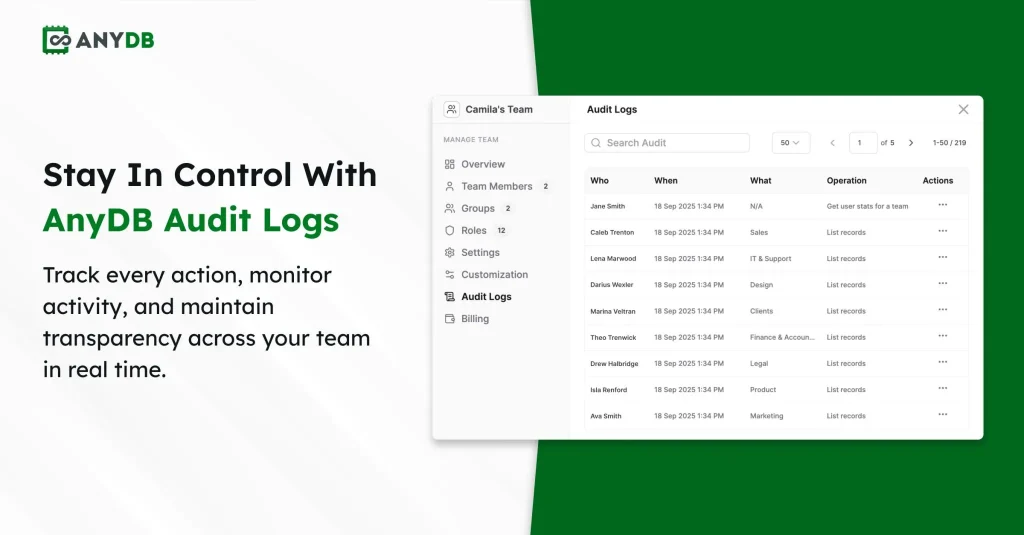Auditing is changing fast. The days of spreadsheets, email chains, and manual checklists are slipping away, replaced by an approach that can actually keep pace with today’s business reality.
Relying on outdated methods in this environment is like trying to catch a storm with an umbrella. It works for a while, but eventually things get messy.
Audit management software steps in with clarity. It brings planning, execution, reporting, and follow-up into one system, creating structure where there was once scattered effort.
The result? Stronger risk management, sharper insights, and audit teams that spend more time solving problems than chasing evidence.
In this article, we will explore why audit management software matters, what features deserve your attention, and how to implement them with confidence.
Think of it as your practical guide to making audit processes not only manageable but also sustainable.
The Importance of Audit Management
Audit management has always been about discipline and oversight, but the way organizations approach it has changed dramatically. Traditional audits often lean on spreadsheets, endless email threads, and evidence scattered across systems. For small teams, this can be frustrating. For complex organizations, it becomes a real bottleneck.
This is where audit management steps in as more than a compliance exercise. It becomes a strategic function. Strong audit practices protect organizational integrity, prevent risks before they escalate, and provide leadership with insights that guide better decisions.
The shift is clear. Manual oversight keeps teams reactive, chasing down evidence and patching issues after the fact. Audit management software changes the game by making audits proactive.
It provides visibility across operations, ensures traceability of every action, and applies data analytics to uncover patterns that manual reviews would miss.
The organizations that recognize this are the ones building resilience in an increasingly complex regulatory environment.
Technology has reshaped almost every business function, and audit is no exception.

How Technology Transforms the Audit Process
One of the most immediate changes comes from centralized audit information. Plans, workpapers, evidence, and findings live in a single repository, which means no more frantic searching for the “latest version” of a spreadsheet.
Everyone knows where to look, and everyone is working from the same source of truth.
Strong document management keeps this order intact. Version control, evidence attachments, and access tracking ensure nothing gets lost in translation.
Auditors can link documents directly to audit items, creating a clean trail that is easy to follow and verify.
Audit management tools also remove the pain of scattered conversations. With streamlined communication, teams, stakeholders, and even external reviewers can collaborate in one space, whether they are across the hall or across the globe.
Another big win is automated workflows. Assignments, reminders, and evidence requests can all be set to run automatically. Instead of manually following up, the system handles the nudging.
Pro Tip: automation saves more friendships than you think when deadlines get tight.
Consistency is another strength. With pre-built procedures and templates, organizations can rely on standard checklists, forms, and audit programs.
This not only improves efficiency but also ensures both internal and external auditors can clearly understand the workflow without unnecessary back-and-forth.
Finally, an effective audit management system doesn’t stop at findings. It enforces follow-up actions and remediation tracking so accountability does not fade after the audit closes.
Corrective actions are monitored, delays are escalated, and issues are resolved before they turn into bigger problems.
In short, technology streamlines audits by removing duplication, enforcing discipline, and enabling collaboration. The result is an audit process that is faster, more accurate, and far less stressful for everyone involved.
Key Features to Look for in Audit Management Software
Not all audit management software is created equal. Some platforms overwhelm you with bells and whistles you will never use, while others miss the essentials.
The smart approach is to focus on features that actually make your audits smoother, more reliable, and easier to manage.
Risk-based audit planning and framework mapping
Modern audits are not about ticking every box but about focusing on what matters most. A strong tool should let you map overlapping standards, such as SOX, HIPAA, or ISO requirements, and build a plan around risk priorities.
Less duplication, more focus, and audits that actually protect the business.
Data analytics and gap analysis
Spoiler alert: few companies pass an audit with no findings. Software that highlights missing controls or compliance gaps, using data trends and historical insights, helps you prepare before the issues snowball.
Issue tracking and remediation workflows
Findings are inevitable, but delays in fixing them should not be. Your audit management system should log issues, assign owners, track progress, enforce deadlines, and escalate when things stall.
Accountability built into the process saves time and reputation.
Evidence requests and stakeholder engagement
Chasing evidence through endless emails is a game no one wants to play. With the right tool, evidence requests are tracked in one place, responses are captured, and you never wonder if that file is still sitting in someone’s inbox.
Collaboration and access control
Auditors, compliance officers, and stakeholders often work across teams and geographies. Secure sharing, role-based permissions, and discussion threads keep collaboration smooth while ensuring that sensitive information is only visible to those who need it.
Task alerts and escalation
Pro Tip: reminders from software are often more effective than the twentieth “just checking in” email from your audit lead. Automated alerts keep tasks on track, and overdue items can escalate to leadership before they become liabilities.
When evaluating audit management software, remember that not every feature matters equally to every organization. A small company with light regulatory exposure will not need the same capabilities as a multinational bank.
Prioritize what aligns with your size, industry, and risk profile. The right features will not only streamline compliance but also transform audits into a tool for better decision-making.

Using AnyDB for Audit Management
Audit management is complex, but it doesn’t need to be chaotic. AnyDB already comes with structured compliance and audit templates (such as the ISO 14001 Internal Audit template), so you don’t have to reinvent the wheel. These templates serve as a solid foundation while still giving you room to adapt them to your organization’s unique needs.
The strength of AnyDB lies in its flexible architecture. Records, relational linking, workflows, and forms all work together to centralize audit activities in one system.
Imagine this scenario: your team is running an internal audit while also preparing for a regulatory compliance review.
Instead of juggling two separate systems (and countless spreadsheets), AnyDB lets you manage both streams of work in the same environment. Findings, evidence, and corrective actions all connect in one place.
Suddenly, your audit process feels more like orchestration than firefighting.

Audit Smarter, Not Harder
Adopting any new software takes planning and care. The good news is you don’t have to do it all at once. Start small, pilot a single use case, and expand as your team grows comfortable. That’s how real change sticks.
AnyDB makes this even easier. With ready-to-use audit and compliance templates, you can begin your journey without building from scratch. From there, custom workflows and records let you scale at your own pace.
Ready to see it in action? Explore AnyDB’s audit templates today and experience the benefits firsthand.
What is AnyDB?
AnyDB is a unified, customizable data store designed to streamline and empower your entire organization. Effortlessly store, organize, and share custom business data to drive both internal and external operations across teams. Think of it as spreadsheets on steroids.Perfect for Sales, Marketing, Operations, HR, and beyond. Discover AnyDB





